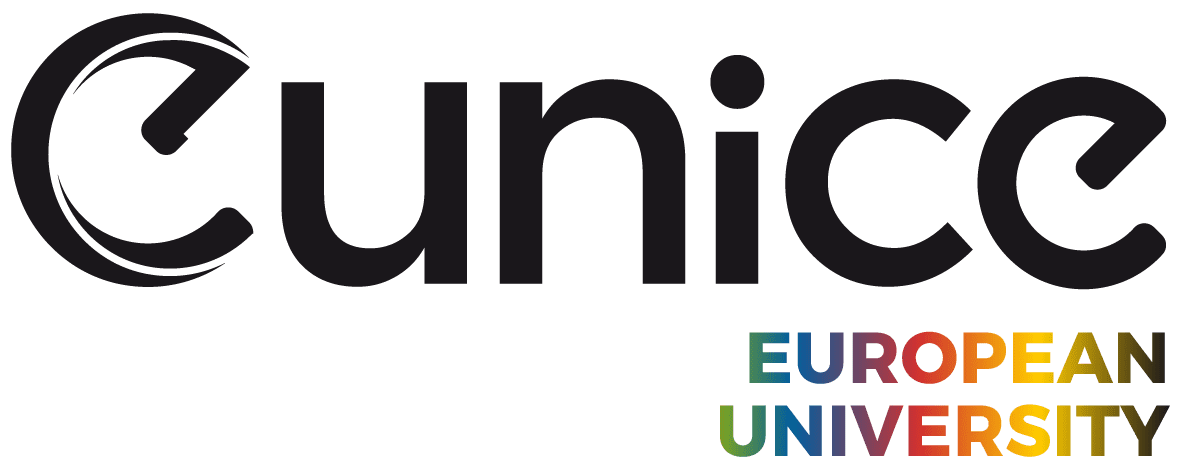EUNICE, our European University built by a fellowship of universities in Poland, Germany, Spain, Belgium, France, and Finland, managed with a handful of different work packages, is now in its establishing phase. The work packages are projects inside a project and they have participants from each partner country. In this blog post I will be sharing some insights on one of these packages.
Looking at all the work packages on EUNICE, WP4 is where most of the IT-magic happens. When building an international multi-site campus, it is crucial to have well-tailored tools that suit the needs of modern-day learning. Also, for the continuity of the European University system, we need to build systems that are sustainable and scalable. Sustainable in a way where manual administrative work is minimized and scalable in a way where we are ready to respond to future needs when European universities have their own steady place in the higher educational system.
THE IDEA
So, if we start from the basics, during this project we will be building an open virtual system for education and research & innovation. Essentially, alongside other European alliances, we are doing groundbreaking work on how to move core university functions online. Our guideline is “the once only principle” which really makes us examine the fundamentals of service design and the needs of modern-day learners. The core idea of this guideline is in ensuring that students and staff will have to provide data once only and it is reusable across all of EUNICE. Users are spending more and more hours online and we need to keep things simple and streamlined for them. I’m likely not the only one to get frustrated rather quickly, if a portal or a digital service does not work properly, seems confusing, or takes too many steps to complete something and I don’t want these kinds of completely human feelings to prevent the study experience and possibilities.
THE CHALLENGE
Our EUNICE students all come from existing universities that have long traditions and well-functioning operating systems. Each of the seven universities has a system for study records, course enrollment, an education system for online studies, etc. We are building a separate system on top of these other ones and we want the data to be updated and transferred from one system to another. It could be seen as a challenge to adapt systems and processes so that data is moving swiftly as the universities are using different tools. In my opinion, it’s fair to say that we can evaluate the best parts of each university’s tools and processes and pick the best parts while learning from each other.
OUR EUNICE MOODLE
My WP4 colleagues and our leader Harri Lehtinen have done excellent work and we have our own EUNICE Moodle up and running. The first courses were launched in January and almost 20 EUNICE courses have been available for our students already. In general, the user experience of Moodle has taken huge steps during the past years. Ten years ago, when I was a student, Moodle was the place where I could download the lecture slides (rarely) and upload the course assignments (a bit more often). The unfortunate recent pandemic had huge negative impacts to our society, people’s lives, and students but it really gave the one last push for eLearning and now the modern Moodle is able to host the entire course and include huge amounts of pedagogically advanced methods for learning. Quizzes, flashcards, games, and other H5P (free open-source interactive content HTML5 Package) tools bring the elements of gamification to learning and activate the reward system of our learners’ brains. Our EUNICE Moodle is modern, user-friendly, and lean. As the system has now been implemented, we are in the support phase. As we have more user feedback, we are able to increase the comfort of use. Also, we will be finding the best practices of this modern system and sharing them with our course creators. As we learn how to take the best benefit of the system, we will have opportunities also for example to pay attention to the neurodiversity of students. As it has been estimated that 30-40 % of population are neurodivergent, the accessibility of study material can be easily improved with the use of visual aids like icons, colors, or fonts.

How do our students access Moodle? With their home university account of course – smoothly and securely. Vast majority of our EUNICE partners are members of the eduGAIN interfederation service, which enables Web Single Sign on for the members of the research and education community widely recognized by universities in Europe. The user experience for students should be smooth and the universities should be able to feel secure in that their data and courses can be viewed by their own students only.
WHAT’S NEXT?
A thing I’m especially enthusiastic about is our upcoming MOOC’s. Massive open online courses have all the means for shaping societies, because they enable lifelong and mobile learning. As long as you have an email address and access to the internet with your device, you will be able to log in to one of our upcoming courses. MOOC’s also give the universities opportunities to learn. The course creators will have opportunities to explore new methods and viewpoints as the socioeconomic dimensions of their students widens. The planning for MOOC system is ongoing at the moment of writing but we plan to have it as a part of existing infrastructure with the easiest possible login options. All in all, this will be a great enhancement for the EUNICE brand.
WP4 still includes two bigger entities that are project-wise scheduled to finish by June 2023. I can honestly say I’m excited to be able to participate in developing and implementing a virtual lab and a research platform during the following year.
ABOUT THE AUTHOR:

Paula Hiipakka is a Specialist at the University of Vaasa, working full-time with EUNICE. Paula has entered the team from Vaasa’s energy technology industry and is excited about entering this new world of lifelong learning. On her free time, she enjoys gardening, photography, and video games.





